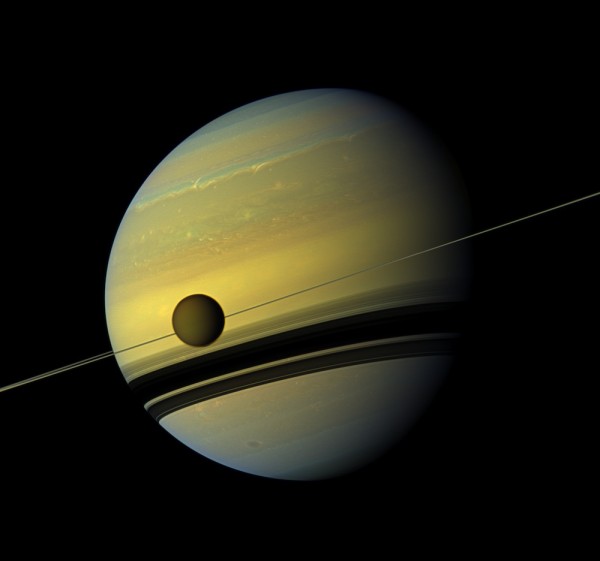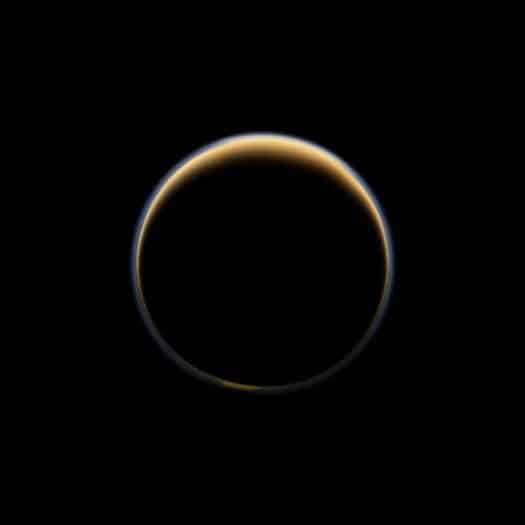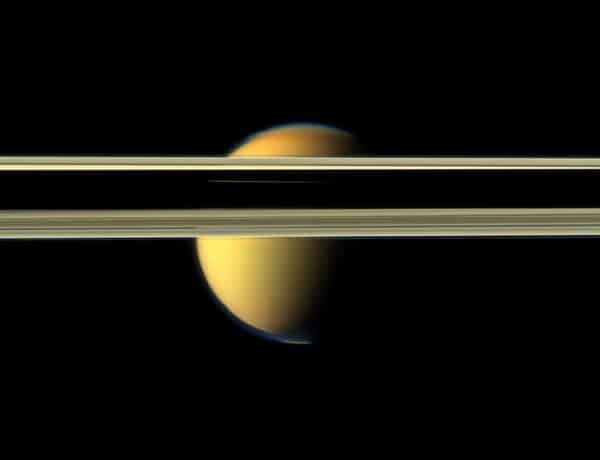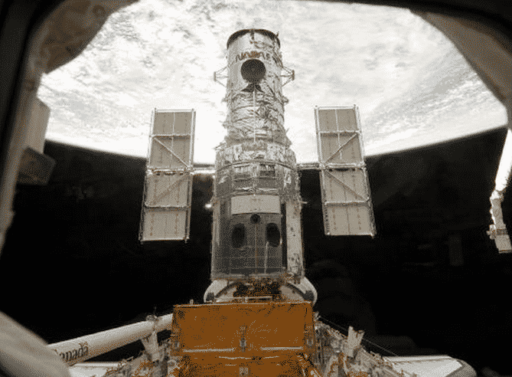Do you remember NASA’s spacecraft/probe “Cassini“, which is orbiting around Saturn and its largest moon, Titan? Recently, Cassini has captured some new natural-color images of Saturn and Titan. NASA has released the images on Wednesday, Aug. 29. Do you want to see the spectacular photos?
Cassini launched in 1997 and it has been studying Saturn and its rings and moons since it arrived in orbit around the planet in 2004. Saturn’s largest moon Titan is the only moon which has a proper atmosphere. Titan measures 3,200 miles (5,150 kilometers) across. It is larger than the planet Mercury. The image above is actually a six-image mosaic – two each of red, green and blue spectral filters. The thin line which bisects/traverses the image is the ring system of Saturn. It can be seen on its edge (shadows cast by the rings can be seen on the lower half of the planet). Titan, is in the foreground.
In the above image, the azure blue in the northern Saturnian hemisphere greeted Cassini when it arrived there in 2004. Now it (azure blue in the northern Saturnian hemisphere) is fading. This fade is happening because the seasons have changed in the Saturnian system slowly. Now the blue hues are resurfacing in the southern hemisphere where winter is coming on. Cassini is watching the seasons change in slow-motion. In fact, Cassini will put its eye upon Titan and Saturn’s other moons till 2017 (minimum).
At the top of this above image, we can see a slightly darker layer. This darker layer is known as the north polar hood. At the bottom of this above image, we can see the south polar vortex. Cassini scientists have been watching the moon’s south pole since a vortex appeared in its atmosphere in 2012. Besides, in the above image, a sliver of illuminated Titan can be seen through the Cassini Division in the rings near the middle of this darkness.
Amanda Hendrix, deputy project scientist at NASA’s Jet Propulsion Laboratory (JPL) in Pasadena, California said, “It is so fantastic to experience, through the instruments of Cassini, seasonal changes in the Saturn system. Some of the changes we see in the data are completely unexpected, while some occur like clockwork on a seasonal timescale. It’s an exciting time to be at Saturn.”
NASA’s spacecraft Cassini captured the natural colorful images on 16 May with its narrow-angle camera. At that time, Cassini was inside and just above the plane of the rings, but approximately 1.9 million miles (3 million kilometers) away from Titan. NASA has published the image at their website on 29 August. After deeply analyzing, researchers have found vast differences between these natural colorful images and the images which were captured 8 years ago by Cassini. To see more colorful images of Saturn and Titan, head over to NASA’s website.
Source : NASA, Space
Thanks To : PopSci, Wired, New Scientist
[ttjad keyword=”dslr-camera”]




![Read more about the article [Video] NASA Recreates The Capturing Of Stunning Earthrise Photo 45 Years Ago](https://thetechjournal.com/wp-content/uploads/2013/12/earthrise-512x415.jpg)

